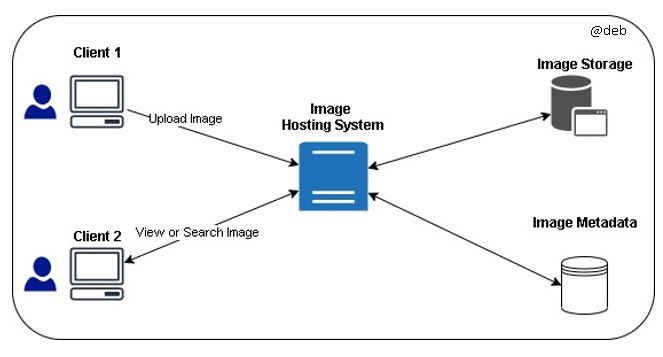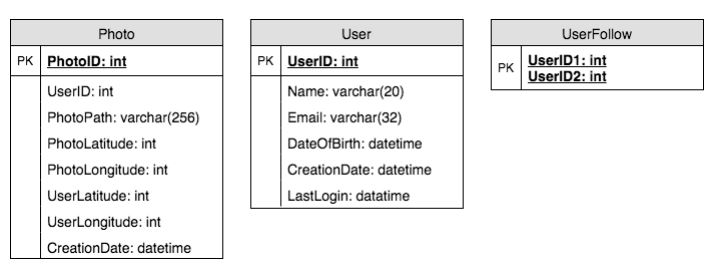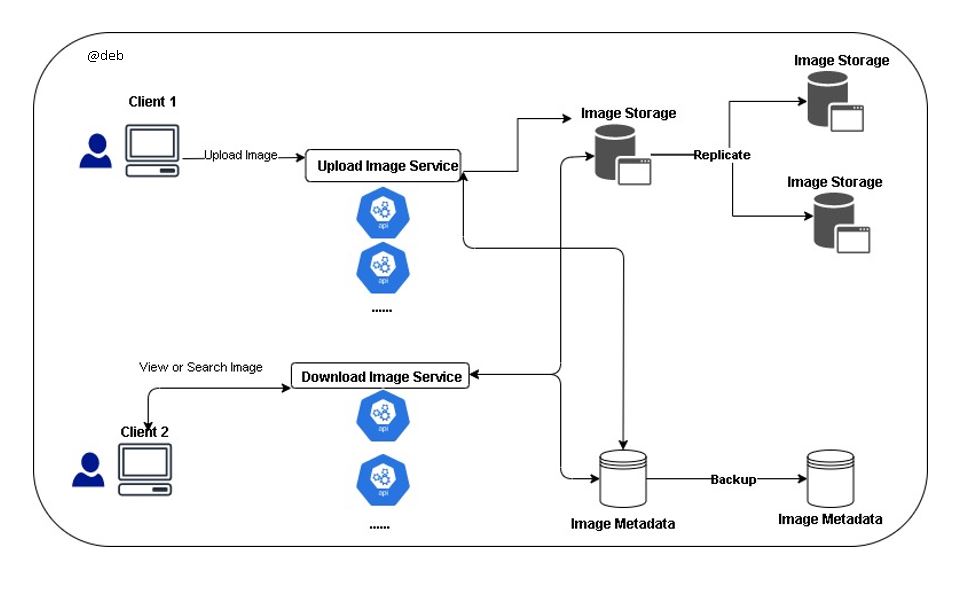Design Photo Sharing App
Definition
A Software application to provide a platform to upload , view and search photos. Additionally, follow and search users. Platform must provide seamless experience to users in all devices.
Requirements
Functional Requirement
- System must allow users to Upload and view photos
- System must allow users can follow users
- Users can Search user and photos
Non-Functional Requirement
- Low latency : System should provide near real time feed generation (~200ms)
- Consistency : System should provide same message to users in all devices
- Available : System must be highly avialable
- Reliable : System should not lose photos/user data
Capacity Management
- Total users : 500 M
- Active users : 1 M (daily)
- Avg photo size : 200 KB
- Say 2M photos uploaded daily , then total space (photos) per day = 2M * 200 = 400G B per day
Total space (photos) in 10 years = 400 GB * 10 years * 365 days per year = 1425 TB
High level Design

Database Schema

Data Size estimate
- Calculate for 10 years
- Data Compression and Replication are out of scope
Users space
-
UserID (4 bytes) + Name (20 bytes) + Email (32 bytes) + DateOfBirth (4 bytes) + CreationDate (4bytes) + LastLogin (4 bytes) = 68 bytes
-
For 500 million * 68 ~= 32 GB Photo
Photos space
-
PhotoID (4 bytes) + UserID (4 bytes) + PhotoPath (256 bytes) + PhotoLatitude (4 bytes) + PhotLongitude(4 bytes) + UserLatitude (4 bytes) + UserLongitude (4 bytes) + CreationDate (4 bytes) = 284 bytes
-
Say 2M photos upload per day * 284 bytes ~= 0.5 GB per day
-
For 10 years * 365 * 0.5 GB = 1.88 TB of storage.
User Follows space
- For 500 million users * 500 followers * 8 bytes ~= 1.82 TB
Total space required for all tables for 10 years
Total space
= Users space + Photos space + User follows
= 32GB + 1.88TB + 1.82TB ~= 3.7 TB
Component Design

- Assume web server has max 500 connection
- This means 500 concurrent connecion (uploads or reads)
- Separate and dedicated reads & uploads servers (So as uploads dont hog system and improve scaling)
- Multiple copies of files to be stored
- Multiple replicas of servers running (removes redundany)
Data Sharding
- Partitioning based on UserID
- Assume 1 shard has 1 TB , with 3.7 TB - we would require 4 shards
A few Questions
- How do we handle influencers or people with many followers ?
- How do we handle people who post more post than others ?
- How do we handle sitaution where users photo are not in 1 shard ?
- In case , lost of 1 shard - users might experience availability issue ?
Possible solution : If we can generate unique PhotoID first and then find shard number through “PhotoID % 10”, the above problems might be solved (partially)
Generate Photo IDs
- Dedicate a separate database instance to generate auto-incrementing IDs.
- Assume PhotoID fits into 64 bits, we can define a table containing only a 64 bit ID field.
- Next, whenever we add a photo in our system, we can insert a new row in this table and take that ID to be our PhotoID of the new photo
In order to avoid single point of failure ,
- We define with one generating even numbered IDs and the other odd numbered.
- Place load balancer in front of both of these databases to round robin between them and to deal with downtime
Cache & Load Balancer
Read about load balancer from here
Need to have :
- Photo Cache server
- CDN [Content Delivery Network] (For globally distributed users)
- Cache for Metadata users [LRU] Read more about cache from here
Apply 80-20 rule
It means 20% of daily read volume for photos is generating 80% of traffic which means that certain photos are so popular that the majority of people read them. This dictates that we can try to cache 20% of daily read volume of photos and metadata.
More readings
Encourage to subscribe & go through course in more details from Educative.io - here